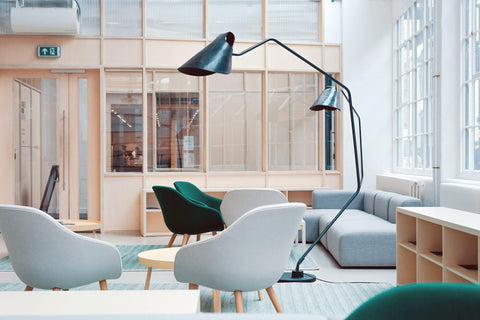The Power of Sustainable Interior Design

In recent years, talks of sustainability have been on the rise. Actionable plans have seen an improvement in the global environment. But how is sustainability related to interior design?
What is Sustainable Design?
Oftentimes the term “sustainability” tends to make us picture greenery and positive environmental impact. While it is applicable and true to some extent, the true meaning of it is in fact “to be long-lasting”.
Sustainable design can consist of many factors. In sustainable design, we aim to reduce the negative impacts on the environment (from the sourcing of materials to the manufacturing of goods) and promote the health and comfort of our customers.
Why is it important?
In this day and age, the business landscape is highly dynamic and ever-changing. Without a sustainable design that is highly adaptable and future-proof, it can only mean that the business has to invest more in various furniture systems to cater to the business’ varying needs. Aside from being detrimental to the environment, it is also an unnecessary increment in cost to the business. Furthermore, an office can only hold so much.
Benefits of Adopting Sustainable Designs
Protects the Environment
Needless to say, one of the aims and benefits of adopting sustainable is undoubtedly for the good of the environment. Some sustainable materials include recycled steel, reclaimed wood, bamboo and hempcrete.
Balance Between Cost-Effectiveness and Durability
Cost of design can come from all aspects. From the overall size, weight and number of materials incorporated into a design, it can significantly affect a product’s cost. For instance, a product that has a lighter weight will have lower travel costs and associated emissions.
Products that are configurable, and flexible allows the user to adapt the product to different spaces. Think of products like these as a 2, or 3-in-1. Did you know that modularity can increase the resale value of the product? Wilsin’s WIL-HAT Height Adjustable Table is a splendid example of cost-effectiveness in sustainable design. Equipped with dual motors and a tabletop with an ergonomic curve, it’s capacity for customization turns your desk into a 3-in-1 piece.
In the other aspects of interior design, the designer can choose to maximize the usage of natural lighting to a comfortable degree. This helps the business save electricity cost.

Aside from being adaptable to the varying needs of the business, sustainable design should also embody durability. A product that is designed with longevity in mind is useless if it is not durable. A great example would be bricks and wood materials. Bricks have a long lifespan and can provide a circular development as they can be reused. This allows for greater value overtime. On the other hand, although certain wood materials emit less CO2 during production, they require constant maintenance afterwards. Thus, a balance of cost-effectiveness and durability is found in bricks. However, it is not to say that wood materials are not a good choice. In some instances, wooden furnitures are preferred when it comes to sustainable design.
Promote Employee Well-being
One of the 4 pillars of sustainability is known as ‘Human Sustainability’. This pillar takes into account the development of skills and human capacity to support and promote the well-being of communities and societies.
In an office space, a space for employees to wind down and take a breather has proven to increase productivity and encourage creative innovation. Aside from rest pods like the Canopy and the Domain, elements of design like the choice of paint and greenery can have an impact on your employees’ health.
Using eco-friendly paint eliminates the risk of triggering anyones’ allergies one might have towards chemicals used in artificial paint. Adding a touch of natural greenery in the office can help improve the air quality within the office. Plants also liven the office and is soothing for the eyes.

Easy to Design
Most tend to imagine that sustainable design solutions are difficult to incorporate into a rigid and modern office space. In fact, some believe that the aesthetics will clash. That is not necessarily the case.
A great example is with Wilsin’s Cubic Evolution lighting. Highly acclaimed as future-proof, we have eliminated a limitation that you might experience if you are constantly shifting your workspace around. With high portability and sufficiently strong lighting, the Cubic Evolution boasts its flexibility by allowing you to shift it to wherever your workspace is. Might we add that the Cubic Evolution lighting is also equipped with a smart sensor that switches off automatically when it senses your absence after a period of time. Talk about energy saving! You can now look forward to reconfiguring your workspace without going through the hassle of rewiring your cables with Wilsin’s Cubic Evolution lighting!


Source : Wilsin's Cubic Evolution Lighting
At Wilsin, we believe that sustainability and adaptability go hand in hand. We believe in equipping our clients with the freedom of transforming spaces with ease. Time is of the essence. The transformation of the space should not take too long either. Watch as we transform this meeting room into a seminar-style area in under 7 minutes

Conclusion
Sustainability will continue to be a rising trend. It is not too late to enjoy the boundless benefits it brings to a business, no matter the size of your office. Keen on transforming your office space into a sustainable work space? Chat with us today at sales@wilsin.com.sg


